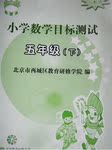题目内容
The bill would ______ workers twelve weeks of unpaid leave for family emergencies.
A. permit B. supply C. admit D. provide
A

练习册系列答案
 天天向上一本好卷系列答案
天天向上一本好卷系列答案 小学生10分钟应用题系列答案
小学生10分钟应用题系列答案 目标测试系列答案
目标测试系列答案
相关题目
题目内容
The bill would ______ workers twelve weeks of unpaid leave for family emergencies.
A. permit B. supply C. admit D. provide
A

 天天向上一本好卷系列答案
天天向上一本好卷系列答案 小学生10分钟应用题系列答案
小学生10分钟应用题系列答案 目标测试系列答案
目标测试系列答案